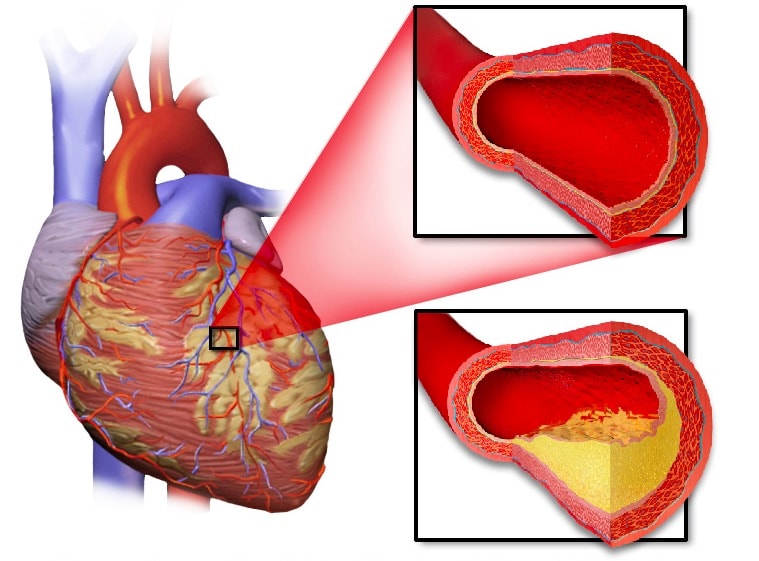Introduction
Twenty years ago, there was a widespread belief in the medical and scientific community that optimizing selenium status would surely translate into better health for us all. At a minimum, improved selenium levels was touted as one of the solutions for better immune function, fertility, fighting infectious diseases, promoting heart health and as a cancer treatment and prevention strategy.
With time, the selenium panacea zeal has been tempered with a more sophisticated understanding of specifically how and where selenium can help.
What Is Selenium?
Selenium is an essential trace element which is a constituent of more than 20 selenoprotiens which play key roles in reproduction, thyroid hormone metabolism, DNA synthesis and anti oxidation. These selenoproteins have selenocysteine at their active centre.
Skeletal muscle is the major site of selenium storage in the body and accounts for 28-46% of selenium stores.
Selenium was accidentally discovered by the Swedish chemist Jons Jacob Berzelius in 1817. The name is derived from the Greek word 'selene' which means moon. It is a metalloid and belongs to group 16 of the periodic table.
Selenium is found in sedimentary rocks. Some regions of the world are low in selenium while others are considered to be selenium 'toxic'.
Selenium deficient countries include Finland, Sweden, Scotland, Ireland, Germany,Italy and the Czech Republic while the USA, Canada the Punjab region of India, Enshi district of China, Japan and Venezuela are selenium rich countries.
Selenium is an essential micronutrient for humans and animals.
Selenium is chemically similar to sulfur and is taken up into plants via sulfur transporters in the root plasma membrane.
Selenium can be classified into:
- organically bound (selenomethionine and selenocysteine)
and
- inorganic forms (selenate and selenite).
Key landmarks in selenium research came in 1957 when Schwartz and Foltz showed that selenium protected against muscular dystrophy and liver cirrhosis.
There is high global variability in human selenium levels which can be attributed to:
- geography (as above)
- dietary habits
- ethnicity
- age
- gender and smoking.
Selenium deficiency occurs at a dietary intake of less than 40 ug/day while toxicity occurs at levels greater than 400 μg/day.
Biomarkers of selenium status include plasma, whole blood, red blood cells and selenoprotien P.
Plasma and whole blood reflect recent selenium while red blood cell selenium is a better marker of long term selenium status.
Selenium supplementation plateaus at three months. Hence standard practice is to measure selenium at baseline and flowing 3 months of supplementation.
Patients at risk of selenium deficiency include those with:
- Crohn's Diseases
- Cystic Fibrosis
- Pancreatic Insufficiency
- Liver Disease.
Selenium deficiency can lead to Keshan Disease (enlarged heart and poor heart function) and Kashin-Beck Disease (osteoarthropathy).
There are over 1000 selenium products for sale on Amazon and range in price from $0.04 to $1 for a 200 mug capsule.
Can You Get Selenium From Food?

The RDA for selenium is 30 -85 mcg per day.
The standard American diet provides approximatey 100 mcg of selenium per day.
Plants are the main source of selenium for both humans and animals.
Selenium content in food varies from plant to plant and depends on the soil, the accumulating capacity of the plant and the response of other substances in the soil. As an example, sulfur competes directly with selenium for absorption.
Selenate is the most abundant form of bioavailable selenium in the soil and is the dominant form in alkaline soil.
Soil contains inorganic selenite and selenate that plants accumulate and convert to organic forms such as selenocysteine and selenonethionine.
Plants are defined as hyper accumulators of selenium (Astrtagalus), secondary accumulators of selenium (Brassica) and non-accumulators of selenium (grass).
Brazil nuts are a very rich source of selenium. One nut provides about 200 mcg. In fact, some health agencies caution against excessive brazil nut consumption because of the risks of selenium toxicity.
Typical selenium concentrations for common foods are as follows:
- Sunflower seeds 105 mcg per 136 gm cup
- Herring 81.8 mcg per 140 gm cup
- Barley flour 55.8 mcg per 148 gm cup
- Dry pasta 81.9 mug per 140 gm cup.
(I wish the size of the cup were standardized but it appears not).
Interestingly, smoking lowers the levels of selenium even though smoking is a source of selenium exposure. The effect of smoking on body selenium levels may relate to effects of cadmium on selenium metabolites.
Is There Any Research?
There are 31,000 publications relating to selenium and that includes over 1000 human clinical trials. To put this into perspective, this is about one third of the number of studies on magnesium (100,000 studies and over 3000 human clinical trials).
Is Selenium An Antidepressant?

An Iranian randomized double-blind trial evaluated selenium supplementation (100mcg) versus placebo in 166 primigravida women. Selenium supplementation was associated with a statically significant increase in selenium levels and a lower depression score at 8 weeks (1).
A double blind cross over study, randomized 50 subjects to either selenium 100 mcg or placebo for 5 weeks (2). A food frequency questionnaire was also used to assess the intake of selenium in the diet. Overall intake of selenium was associated with a general elevation of mood and specifically a decrease in anxiety. Low selenium dietary intake was associated with more reports of anxiety depression and tiredness.
Bottom line
The very limited and short-term data on the effects of selenium on mood are promising but are insufficiently robust to recommend selenium as a general mood booster.
Does Selenium Boost Fertility?

The testis has a receptor called apoER2 which takes up a selenoprotein (SEPPI1) required for testicular function. A randomized controlled trail showed that selenium supplementation (100mcg daily) in sub fertile men with low selenium concentrations improved sperm motility and enabled 11% of mens to achieve paternity as compared to none in the placebo group (3).
In contrast, another study in 11 healthy men showed that high selenium intake (300mcg) decreased sperm motility (4).
The issue of fertility and selenium in women is more complex. Selenium levels usually drop in pregnancy due to volume expansion. Equally selenium levels drop with inflammation and excessive inflammation may be a feature of miscarriage (5).
Bottom line
The science on selenium and fertility is inconclusive at this time.
Does It Improve the Immune System?

Two comprehensive reviews summarized our current understanding of the role of selenium as an immuno-modulator (6, 7). Data from cell culture, animal studies and human studies were included in the reviews.
Both review papers agree that selenium plays a key role in initiating immunity and overall immuno-regulation. The reviews describe a 'hierarchy of selenoprotein expression' meaning that expression of non-essential selenoproteins are preferentially lost and essential selenoproteins are maintained during selenium deficiency states. Very smart indeed. The body prioritises the brain and the thyroid over the immune system which means that the immune system is vulnerable to selenium deficiency.
Following some very interesting (but bewildering basic science including NADPH, SOCE, STIM1, GPX1, SELR, calpaan/calpastatin, HUVECS), the reviewers conclude that there is evidence linking selenium to immune responses. (Literally hundreds of papers were referenced in the reviews which would make it pretty much impossible to go into the details in this blog).
Generally speaking selenium supplementation in individuals who are selenium difficient has a greater effect on the immune system that supplementation in people who have normal selenium levels. However the specific influence of selenium supplementation on enhancing immunity depends on what types of tissues and antigens are involved.
The impact of selenium supplementation is extremely complex- sometimes selenium boosts immune cells and helps kill infectious agents while other times it can actually promote the growth of infectious agents.
Both reviews conclude that we need to do further research to understand the specific mechanisms of action of selenium in different parts of the immune system to help guide a personalized targeted approach to selenium supplementation.
The reviews comment on the fact that selenium supplementation comes with the risks of toxicity which makes it essential to avoid a blunderbuss approach to selenium supplementation. Above all else do no harm.
Bottom line
It is over simplistic to say that selenium helps the 'immune system' as the immune system is not a single entity. It is also inaccurate as selenium has not been proven conclusively to have any clinical specific benefit on the immune system.
Does it Regulate Thyroid Function?

A Dutch team carried out a Cochrane review of the role of selenium in Hashimoto's thyroiditis (8). Only four studies including 463 patients were included in the meta-analysis. The studies were deemed to be of 'unclear to high' risk of bias.
Taken together these studies show that the available evidence was neither complete nor reliable in informing clinical decision making on the role of selenium in Hashimoto's thyroiditis.
Bottom line
The available science cannot help us answer the question of whether selenium supplementation helps with thyroid health.
Does It Help With Asthma?

A pilot study assessed the impact of selenium supplementation on immune parameters in steroid dependent asthma (9). A total of 17 adult steroid dependent asthmatics with sub-optimal selenium levels were given selenium 200 mug per day for 96 weeks. There were statically significant favourable changes in immune parameters such as IgE, IgG, CD3T cells and eosinophils. However the clinical impact of these changes were not evaluated in this particular study.
A Cochrane review from a team of Spanish researchers looked at the role of selenium in asthma (10). The impetus for the review came from the recognition that epidemiological studies suggested that chronic asthma is associated with selenium deficiency.
Only one trial on just 24 patients was deemed eligible for inclusion in the meta-analysis. This small study showed that selenium supplementation resulted in significant improvements in asthma symptoms.
Bottom line
A small study of just 24 patients suggests that selenium may have a beneficial role in asthma. However, this may not necessarily translate into a recommendation that selenium is of benefit to all asthmatics as we will see later in this blog.
Does It Lower Risk of Heart Disease?

A Scandanavian collaboration looked at 443 healthy elderly individuals from a rural municipality in Sweden and evaluated the effect of selenium and coenzyme Q supplementation on cardiovascular mortality (10). The intervention time was four years and the initial follow up period was for 5 years. The study showed significant reductions in cardiovascular mortality, improved cardiac function and an overall improved quality of life. At ten years of follow-up there was still a significant reduction in mortality risk suggesting that the protective effect was not confined to the intervention period but persisted afterwards.
Long term supplementation with coenzyme Q plus selenium was shown to reduce proBNP ( a marker of cardiac failure) and cardiovascular mortality in 443 community dwelling elderly with mild to moderate cardiac failure (11).
A small pilot study evaluated intravenous selenium supplementation in the acute phase of myocardial infarction (day 1 to 3) in 28 patients (12).
All patients received the usual standard of care for acute myocardial infarction. There was a significant increase in selenium levels in the intervention arm of the study. There was also a decrease in left ventricular failure and tachyarrythmias. The abstract of the article does not comment on the statistical significance of these changes. The original article was written in the German language which made it difficult to comment on the clinical relevance of these findings.
All very confusing indeed.
Luckily, a Cochrane meta-analysis of 25 studies (14 cohort and 11 case-control) by Johns Hopkins reviewers showed that there was a significant and inverse relationship between selenium levels and the risk of coronary heart disease (13). This relationship was especially noticeable in patients with low selenium status or intake. The reviewers noted that 0bservational studies have provided misleading evidence for other antioxidants which made them question the validity of the association. On balance they recommended against selenium supplementation for heart disease prevention.
Bottom line
The most comprehensive review to date on selenium in heart health advises against selenium for the prevention of heart disease.
Does It Fight Cancer?

The proposed mechanism of action of an anti carcinogenic effect of selenium is via production of methylselenol which affects gene expression and modifies cell cycling.
Another Cochrane review evaluated the effect of selenium on cancer (14). This time the impetus for the review came from epidemiological studies that showed that people with high selenium in their diet or body tissues had comparatively lower rates of cancer. Additionally some in vitro studies demonstrated an inhibitory effect of selenium on cancer cell growth. The review was carried out by researchers in Italy. The review included observational 55 studies and 8 randomised controlled trials.
Overall the reviewers found limited evidence linking high selenium levels with cancer protective effect.
The authors of the study caution that selenium may be a surrogate marker for a healthy lifestyle and that people with high selenium may have a healthier lifestyle and that is a major possible confounder in the overview.
Bottom line
There is no science to support spending money on selenium supplements (or Brazil nuts) to prevent or treat cancer.
Does It Increase Longevity?
There are two theories underlying the selenium longevity hypothesis:
- deceleration of ageing or
- decreased vulnerability to diseases.
Selenium plays a role in fly mortality it seems (15). The survival rate of flies fed a diet low in selenium was one half of that of flies fed a diet optimal in selenium.
Three prospective studies show that high selenium is associated with low mortaiality.
The first study was the EVA (Etude du Viellissement Arterial) study which was a 9 year longitudinal French study evaluating the relationship between cognitive decline, vascular disease and oxidative stress in elderly individuals (16). During a two year period (1991 - 1993), 1389 men an women (born between 1922 and 1932) were recruited to the study.
The EVA study participants came from Nantes in western France and had higher educational status, higher incomes and greater cognitive function as compared to the general French population.Baseline selenium was higher in individuals who were alive at the end of the period of follow-up as compared to those who died. Mortality rates were significantly higher in individuals with low selenium levels.
After controlling for other factors the association remained significant. The authors concluded that it was too soon to be sure that selenium is a longevity factor but suggested that selenium plays a role in health maintenance in ageing populations.
In the second study,13887 adults were followed up for 12 years in the uS National Health and Nutrition Survey (17). Increasing selenium concentration up to 135 mcg/L was associated with decreased mortality.
In the third study (the Baltimore Women's Health and Ageing Study), low selenium was an independent predictor of death at five years (18).
Bottom line
The science suggests that there may be a relationship between selenium and longevity but as we will see later this is not as a simple linear relationship which can be turned into a public health panacea.
Is Selenium (and or Supplementation) Safe?

Selenium is toxic at higher concentration and has a narrow safe range of intake (therapeutic window). The tolerable upper limit for selenium is 400 mcg per day (although the exact upper limit has been debated).
Selenosis or selenium toxicity is seen in plants and can result in malformed selenoproteins and oxidative stress in the plants.
Phytoremediation is a process whereby toxic metals (such as selenium) are removed from the soil by plants. Hyperaccumualators such as Astragalus were preferred until the development of genetically modified plants that both hyper accumulate and grow faster than natural Astragalus.
Selenium toxicity is also seen in animals and humans.
In the 13th century, Marco Polo observed that some animals died in the Shanxi Province of China following the ingestion of selenium accumulators.
There was a well publicised tragedy at the Kesterton wild life refuge in 1980 when there was the death of migratory waterfowl, fish, insects and plants in the reservoir due to selenium toxicity.
Human selenosis is also seen and presents as loss of fingernails. skin rash, fatigue, irritability and weight loss.
High selenium levels may increase the risk of diabetes and hyperlipidemia.
Selenium may decrease the concentration of the anti-HIV drug dolutegravir and of the oral anticoagulant eltrombopag.
Inorganic forms of selenium such as selenite can impair the absorption of vitamin C.
Conclusion
How can we reconcile this hodgepodge of studies on selenium? The most prolific researcher and author on selenium is probably Prof Margaret Rayman from the University of Surrey (19). She explains that the Swiss physician Paracelsus holds the key to selenium research. Way back in 1567, Paracelsus described the U shaped principle.
Simply put, people with low levels of something benefit from supplementation, while those with normal or high levels can be harmed by supplementation. Genius.
We see huge geographic variations in selenium levels. Someone who lives in a a country with high selenium levels and who eats Brazil nuts will likely have normal to high baseline selenium levels and will not benefit for additional supplementation. In fact, supplementation may push them from normal to toxic levels and be dangerous especially as selenium has a low therapeutic window (the gap between therapeutic and toxic levels are small). On the other hand, someone who has a poor diet plus Crohn's Disease plus lives in a selenium poor country may well benefit from supplementation.
Despite our human desire for 'one size fits all' style dogma (aka marketing), this simply does not work for selenium.
The question of selenium supplementation (or not) needs to be individualised in order to maximize efficacy and minimise toxicity.

Leave a Reply